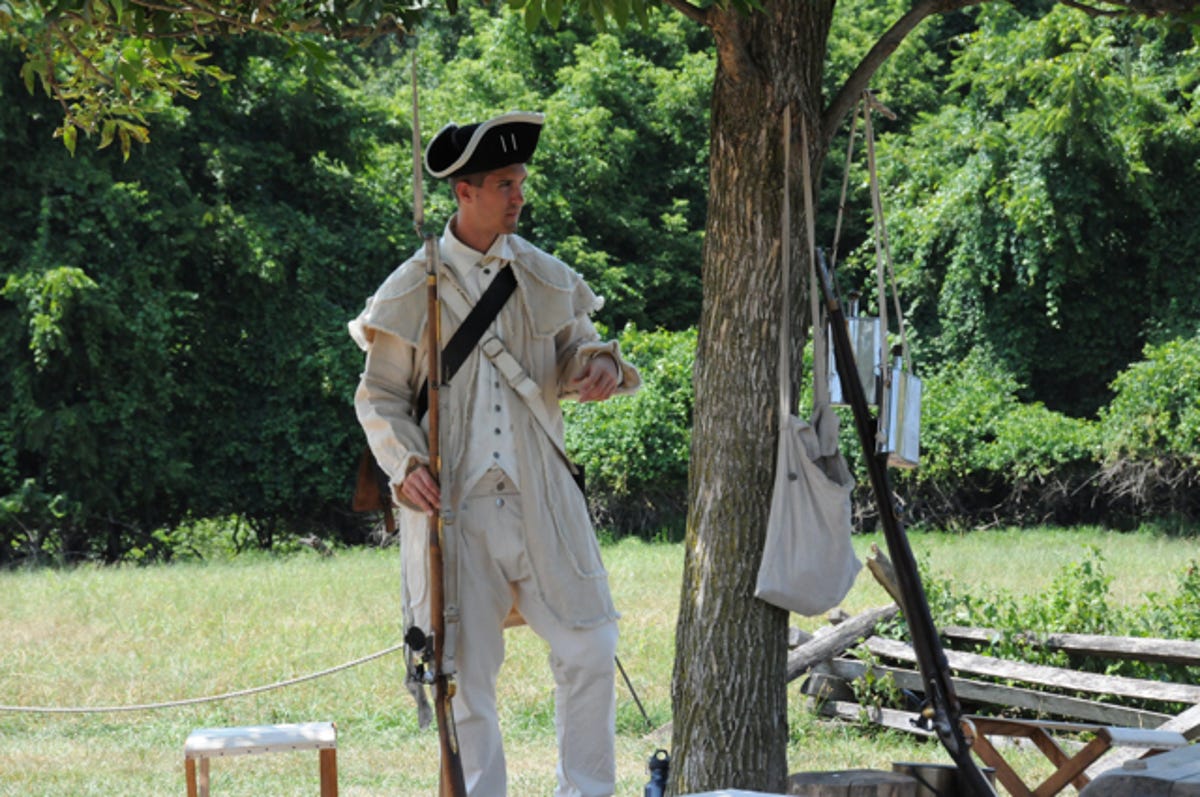Visiting Valley Forge (photos)
On Road Trip 2010, CNET reporter Daniel Terdiman stops at the encampment where George Washington's troops spent the harsh winter of 1777.

Soldier at Valley Forge
According to the National Park Service, "Washington had to balance the Continental Congress's wish for some type of winter campaign aimed at dislodging the British from the capital [Philadelphia] against the needs of his weary and poorly supplied army. By mid-December [1777], he had decided to encamp at Valley Forge.
"From this location, twenty miles northwest of Philadelphia, the army was close enough to maintain pressure on the British yet far enough away to prevent a surprise attack. While the solders who entered camp on December 19, 1777 were not well-supplied, they were not downtrodden."
Over the course of that winter, more than 2,000 American soldiers died, mainly of disease. For every solider who died in battle, 10 died from disease. In large part, that was because most of the soldiers were poorly supplied and poorly nourished. But it was not because they were cold: Many of them died in the warmer spring months that followed the harsh winter.
By early summer of 1778, with a new alliance with the French locked down, the Americans were ready to take on the British. On June 28, 1778, at the Battle of Monmouth, in New Jersey, Washington's troops defeated the British.
As part of Road Trip 2010, CNET reporter Daniel Terdiman stopped Monday at Valley Forge, located in Pennsylvania, not far from Philadelphia. It was nearly 100 degrees in the sun, nothing like the frigid winter conditions Washington's men encountered. Still, Terdiman got a sense for what the beautiful encampment was like.
Seen here, a Continental Army "soldier" ponders his next move. Enactors are regularly on site to entertain visitors.
Washington's quarters
Log huts
Tomb of the Unknown soldiers
Virginia
Porsche
Officers' quarters
Enlisted hut
Field bake oven
"The heart of the oven was a set of portable iron plates which teamsters transported to the site," according to the National Park Service. "Workers then assembled the oven and placed it onto an earthen mound. The dirt mound both insulated the oven and placed it at a proper working height."
One the ovens got going, they would be used around the clock so that the bakers could make thousands of pounds of bread a day. On average, the National Park Service says, the soldiers consumed bread using 84,000 pounds a day of flour.
Guard huts
They lived on a hillside, just adjacent to Washington's quarters.
Office
Aide-de-camp
Attic
Dressing room
The bedroom
Soldiers goods
According to the National Park Service, a soldier was allotted one-and-a-quarter pounds a day of beef or salt fish or one pound of pork, one-and-a-quarter pounds of soft bread or flour or one pound of hard bread.
Arch
Pennsylvania Columns
Washington Chapel
Anthony Wayne
On the statue, a plaque includes these words: "Resolved unanimously that the thanks of Congress be presented to...Wayne for his brave, prudent and soldierly conduct in the spirited and well conducted attack on Stony Point."

